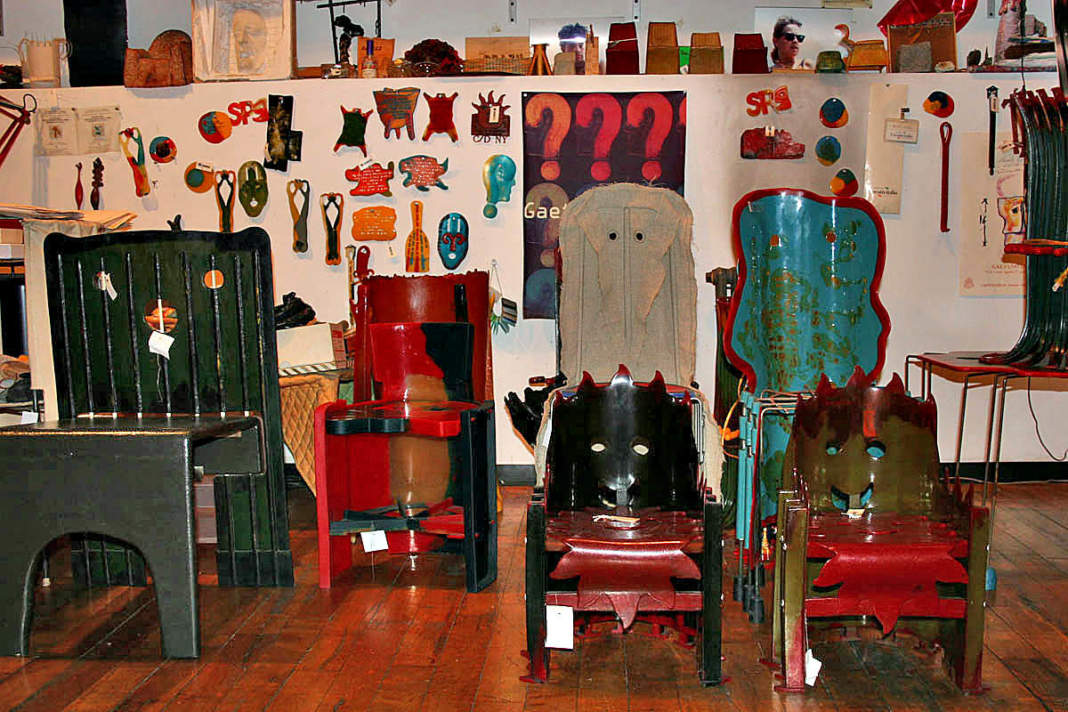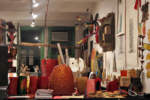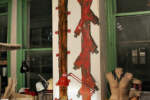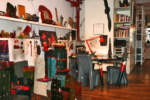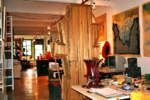location: New York
Brent Lewis: What in your opinion is the key mission of design today?
Gaetano Pesce: The time is right for an object to express more than beauty, nice form, and function. Objects have the potential to express points of view. They can have the characteristics of art, expressed even more powerfully than contemporary art. In the past, art was often a product, there was no photography, for example, and thus no way to remember a place you visited.
So you had a painter make a landscape. Then the camera came on the scene, and art lost this pur pose. But I am convinced that design has a functional and a cultural side, so can be doubly powerful and expressive.
B.L.: But today, it seems like designers are mainly concerned with perfection of form – much of it sleek and sexy, and focused on the surface.
G.P.: I agree. Forty years ago, I issued a chair (the “La Mamma” chair from Pesce’s “Up” series) with a sensual and soft shape, reminiscent of the body of a woman. But a chain connects the chair
to a round ottoman. Thought the chair is quite comfortable, what it espresse, ironically, is that women are prisoners of prejudices of men. I was trying to say that a designer can express
a political view – not in a traditional medium like a magazine article, but in an industrial object made for a household.
B.L.: You talk about reflection humanity in design, which in your work means imperfection, leaving room for randomness and chance.
G.P.: This goes back to the Seventies. At that time I was thinking that society is about differente. Individuale are not all the same; there are different cultures, languages, circumstances of origin, etc. Yet political movements of the day insisted that we are all the same. I tried to say that democracy is not only the assurance of equality but the protection of differente. It would be a tragedy not only for people in general but also for designers not to understand this. In standardized industrial production. When an object is different they call it faulty and throw it out. But i prefer the “faulty” pieces: each has a personalità and is different.
B.L.: This is the idea behind your “diversified series” works?
G.P.: Yes. For instance, cars are all much the same, but in the future I hope that they will be unique for each client. I foreste a third industrial revolution that will have that technological capability. When I first considered how the chain of production can change because of atmospheric pressare, or humidity, or how even a worker’s mood can alter a piece, I searched out a new material and designed the “Golgotha” chair. The MoMA bought one immediately because they saw it was a new idea. I’m convinced this is still the future. The time of identical copies is behind us; we are entering a time of originality. I think the market is asking for this today B.L.: It’s interesting that you say objects have “personalities”.
G.P.: Let me tell you about a lamp I designed, which I call “Verbal Abuse”. Remember when we were in school, and there were certain friends who weren’t very smart? The teacher might say: “You don’t understand, you will never succeed in life”. I call that verbal abuse. A young person who is told such a thing can react in two ways. One student will think he doesn’t care what his teacher says. Another one will believe what the teacher says, and he start to bend more and more in shame. In life they are bent people. Right, and the lamp is weighed down by lead.
The lamp stands up straight, but there are places where people can attach one, two, or three weights until the lamp bends so the light illuminates at an angle to suit their needs. But the lamp is a doubly functional object. One: it is practical. Two: it tells a story about verbal abuse.
B.L.: I’m confused. Are you saying that humain beings sometimes bend when they shouldn’t, or that we should remain strong and free?
G.P.: Both. We should be strong, but also remain reasonable. Verbal abuse is a fact of life. The wife or husband receives verbal abuse from his or her spouse every day. So do employees from their employer. The lamp is talking about the verbal abuse that can happen from the school to the workplace to the family and house. But remove the weights and the lamp stands tall. B.L.: So you hope your designs will reach people on an emotional level?
G.P.: Yes, they should stir the imagination and also have a function. We make a chair that goes to a minority – not because it is for a minority, but because the minority is created as soon as web ring the chair to market. Certain people with a certain mentality will like that chair and others will not.
I often make an object, in the end I have two, three, or ten copies. It’s different from saying this object is only done in ten copies. I say this object is inique and I repeat it for those who will enjoy
it and buy it.
B.L.: Have the people who buy your work and your clients changed in forty years?
G.P.: Forty or so years ago, I was doing my job and only a few people were interested. Now I do more or less the same kind of work – like a recent sofa, called “Montanara” that represents a landscape of a lake in the Alps. They tell me people like it very much. So that means that something changed from forty years ago. I think people are now more aware of design. But I would like
to return to your earlier question about emotion.
B.L.: Please do.
G.P.: I’d like to talk about the architectural project I designed, mainly for myself, for the World Trade Center site. The “Sunset in New York” sofa I made twenty-nine years ago returned to my thoughts on September 11. I’ve lived and worked in New York since 1980, and after that day I believed there was a risk of a social, cultural sunset on New York because of the tragedy. We haven’t been given a fantastic solution, only arguments and delays. So in a way the tragedy continues.
In my project (essentially, a reconstruction of the Twin Towers, connected by a large, heart-shaped bridge), I tried to express something rare in architecture: optimism. When you look at a building, you don’t often say, “Now I feel better about things”. That kind of expression is simply beyond most architects. With my design I tried to say: “Look, we have a future if we are optimistic. We have a future if we believe in new things”.
This text by Brent Lewis was published on Modern Magazine, Spring 2010


